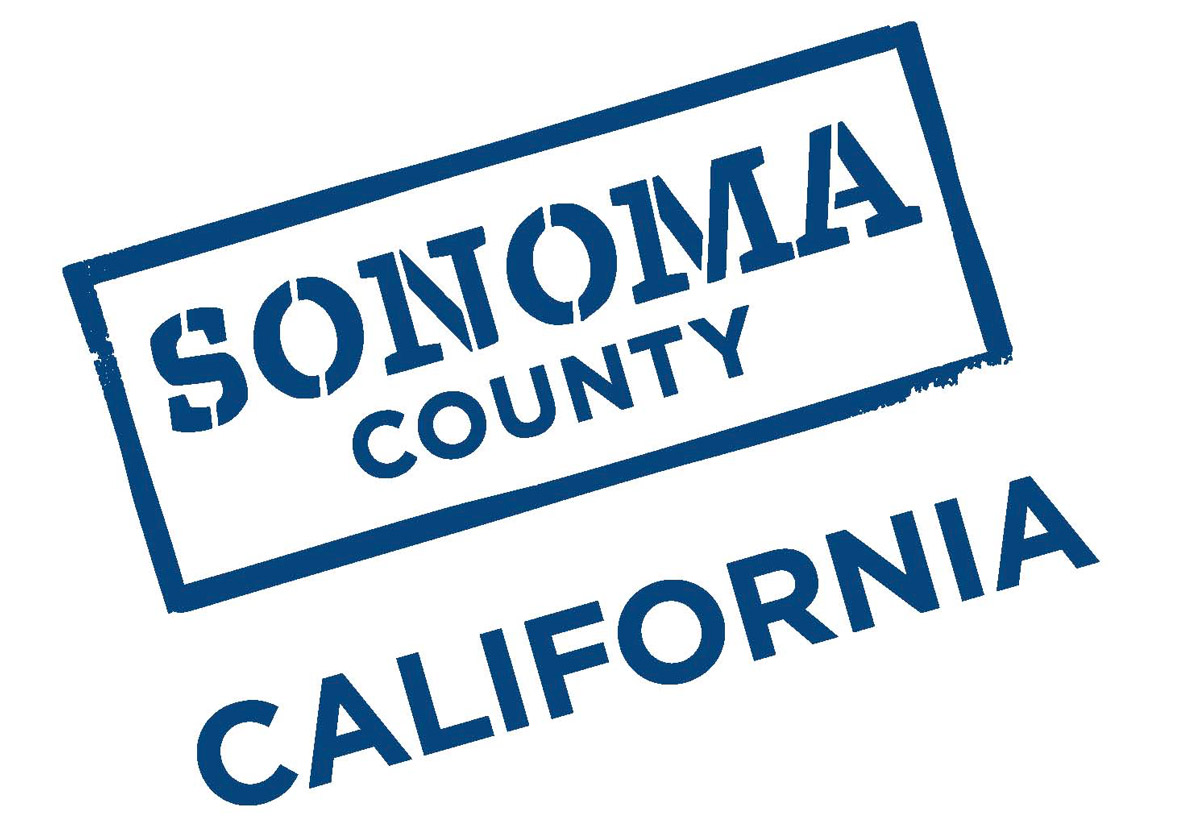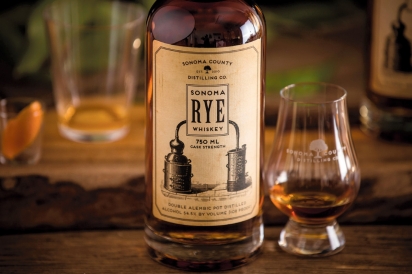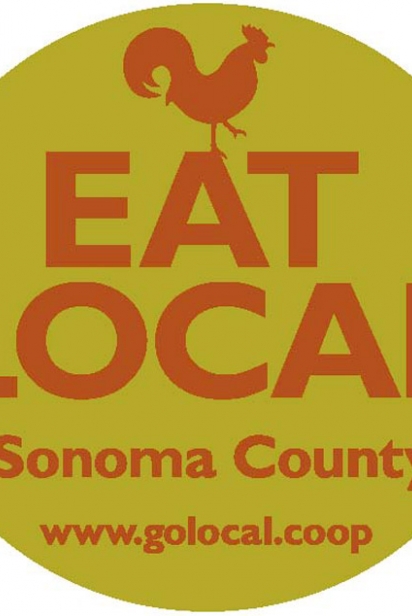What’s in a Name?
ALL THE POWER THAT IS “SONOMA COUNTY”
Earlier this year, the company long known as Clover Stornetta rebranded itself to Clover Sonoma, honoring the dairy’s deep Sonoma County roots. The name change was part of a comprehensive rebranding campaign that included becoming the first major U.S. dairy to sell non-GMO conventional milk. But the addition of the word “Sonoma” was specifically influenced by interviews with hundreds of consumers across California, particularly in Southern California, who reminded the company of its strongest branding attributes: quality, family heritage and California-made.
The company responded with refreshed artwork showing farms and vineyards, a tongue-and-cheek marketing campaign that exchanges “wine country” for “milk country” and even a milk sommelier (yes, in this case “barnyard” would be a less off-putting aroma description).
“We have time-honored heritage in Sonoma country, and so we wanted to honor that, as well as take advantage of the fact that Sonoma is so well known for artisanal craft. The craft of dairy has been a huge part of the community for hundreds of years; many dairy families are in the fourth and fifth generation. This is an iconic place of dairy,” said Kristel Corson, Clover’s director of marketing.
As the brand looks to Southern California for market expansion, it’s building off Sonoma’s mythology: It’s authentic, ecologically concerned, casual but a little luxurious, and unabashedly artisanal and craft-driven when it comes to food.
For a company like Clover Sonoma, place-ingredient branding is clearly worth something—but how much, and how far does that geographic equity go?
Not surprisingly, much of Sonoma’s brand cachet comes from the sum of its parts. The county includes more than 50 miles of Pacific coastline, three rivers, forests, lakes, beaches, hot springs, mountains and over 50 state and regional parks. There are more than 100 organic farms and over 425 wineries. Looking at the wine industry alone, Sonoma County has 17 American Viticultural Areas (designated wine-grape-growing regions in the United States distinguishable by geographic features) and more than 60 grape varieties are planted here. There’s deep roots in agriculture, and particularly in practicing methods that are good for the environment, animals and consumers. According to industry groups, building on that combined legacy works for driving tourism, for increasing local consumption and, sometimes, for drawing consumers in from external markets.
Sonoma has been a tourist attraction for well over 125 years, but it was just over 10 years ago that a countywide tourism campaign was launched.
“A big change, and the reason for a lot of our recent success, came when the entire county came together to promote the region as a single entity, rather than just as our smaller constituent parts,” said Tim Zahner, Interim CEO and chief marketing officer for Sonoma County Tourism.
The hospitality community worked with the Sonoma County Economic Development Board and founded what is now Sonoma County Tourism, dedicated to increasing overnight stays in Sonoma County and promoting the entire region, from the vineyards and farms in eastern Sonoma County to the redwoods and the Russian River and out to the beaches and villages of the coast.
“By pooling our resources and representing the entire county we were able to get our message out to a larger audience and enjoy economies of scale,” Zahner further explained. The agency teamed up with Sonoma County Vintners and Sonoma County Winegrowers to share resources and launch a concerted branding effort, including the current Sonoma County brand and brandmark.
Through the collective efforts of those two wine-focused organizations, as of January 2014, “Conjunctive Labeling” is a legal requirement for all wine produced from grapes grown in Sonoma County. This means that the words “Sonoma County” must appear on the label, in addition to the specific AVA like Russian River Valley or Bennett Valley. According to the Sonoma County Vintners’ website, the intent of the labeling is to “Build brand equity for Sonoma County wines and preserve and strengthen Sonoma County’s position as a recognized world-class wine region; increases sales of wines produced from Sonoma County grapes; and increase recognition for every AVA within Sonoma County, both well-known and less familiar, and ensure that consumers understand where they are.”
According to an independent study cited by Zahner, total direct travel spending in the county increased 52% from 2005 (since the concerted branding efforts started) to 2015. That translates to the generation of in excess of $1.9 billion annually for the local economy, and the support of more than 20,000 local jobs. Clearly, much of that is wine-related tourism—over $1.1 billion according to the Sonoma County Vintners website.
Other agricultural and local business groups have also been organizing to leverage the Sonoma brand to connect with consumers.
Go Local Sonoma, a marketing cooperative that encourages consumers to buy local, was founded in 2009 and has since launched a Made Local magazine, its own electronic currency (Go Local Bucks) and a Go Local Rewards card.
But Terry Garrett, co-managing member of Go Local Sonoma, says that while the numbers demonstrate that local consumers want to buy from Sonoma businesses, that might not be the case for consumers outside of the area.
“65% of consumers report that they are buying more from local businesses than they were five years ago. That’s the domestic market, and that survey says this is our home, this is our place, so we buy these items because we understand the economic multipliers,” he said. “But I don’t know and I can’t really say if that matters outside of here.”
Garrett says that for certain companies, where place is significant in some constitution of the product, a Sonomamade label carries weight—dairy or wine products, for example.
“In the 1990s there was another attempt at branding Sonoma County food and beverage products, and the aim was to use it for exports to build up a brand value, and it ultimatley failed. There’s a lot of speculation as to why, and I think they could never prove beyond wines and other agricultural products that it matters to consumers,” he said.
Garrett thought the name change was a good move for Clover Sonoma, positioning them well against large dairy companies by incorporating a sense of place, and the company will score big points at home. As for it furthering a trend? “I don’t think you can apply that willy-nilly to any other product,” he said.
To check out how flying the Sonoma flag works for a newly rooted Sonoma industry, I visited Sonoma County Distilling Co.
Appropriately, the distillery’s fermenting tank is a repurposed dairy tank. Its top is open, allowing the unique flavors of Sonoma to penetrate the spirits: barnyards, which create a hotbed for yeast, and salt from the Pacific ocean, being two examples.
But it wasn’t just the airoir that drew Adam Spiegel, owner and head distiller, to plant his company in Rohnert Park seven years ago. There was more flexibility with permitting for open-fire distilling in the county, and as a San Francisco native who spent weekends in Sonoma, he understood that the Sonoma brand carried some panache.
“When I go overseas, people love Sonoma. We wanted to develop a brand that had localism to it, and that is also authentic,” he said. “Sonoma has a blue collar history of actually being a place where things are made.”
The brand tries to embody the spirit of Sonoma in their production—a local company smokes their malted barley, organic waste goes to local farmers, the distillery is 100% wind powered and the grains they use are organic and sourced from California as much as possible.
“People know Sonoma as an artisan agricultural place. People know that there are smaller entities here, denoting quality, authenticity and attention to detail. So how can we align our messaging to reflect the best of the county?” muses Tanya Seibold, marketing and PR manager at Sonoma County Distilling Co. “We want to be a shining star of what Sonoma County can be, and we just happen to be doing it in whiskey.”
The company currently distributes its spirits in nine states and 15 countries and has plans to double its distillery size this year. So far, the brand’s story seems to resonate with locals, and outside the county as well.
Back at Clover, I asked Marcus Benedetti, CEO and third-generation owner, if he thinks the new sense of place conveyed in the Clover Sonoma brand and its commitment to social and environmental responsibility go hand in hand. Clover Sonoma is also now a Certified B Corp, achieving 97 points on its initial certification (the median is 55 and 80 is needed to qualify). [For more on B Corps, see the “Businesses with Benefits” article in the Winter 2016 issue Edible Marin & Wine Country.]
“There’s a strong sense of humility around the food system in Sonoma that naturally invites the consumers in,” he said. “There’s transparency: People working in the food system here want to peel back the curtain.”
What the success of companies like Sonoma County Distilling Co. and Clover might illustrate is that leveraging the Sonoma brand in conjunction with upholding many of Sonoma’s dearest values—attention to quality, craft and responsibility—puts even more power behind a name.







